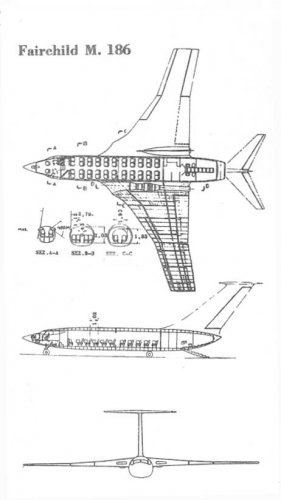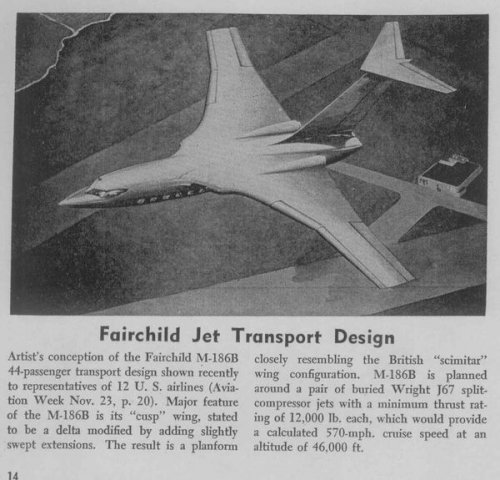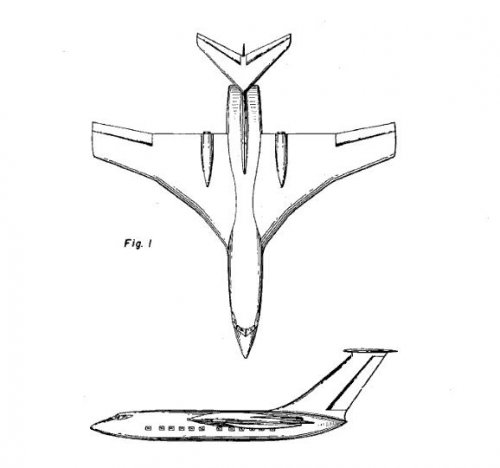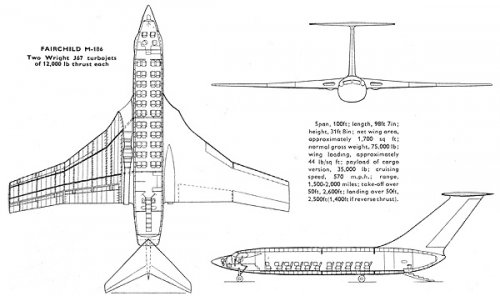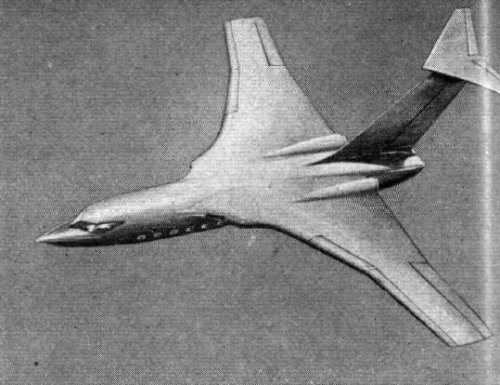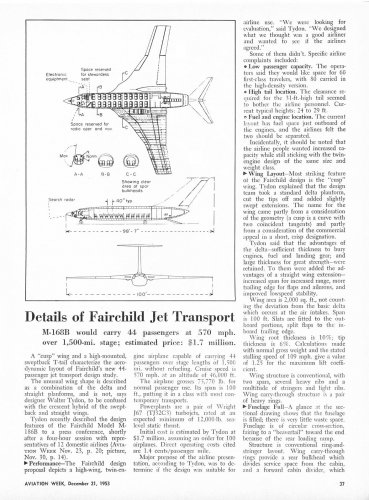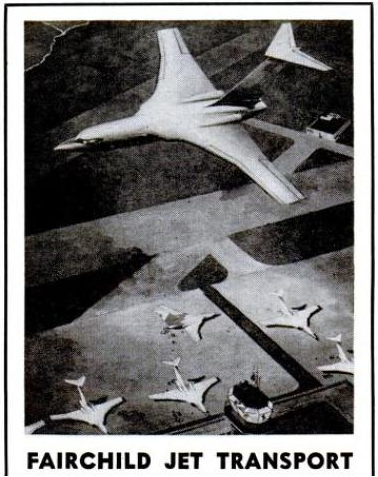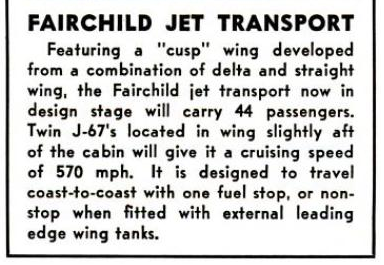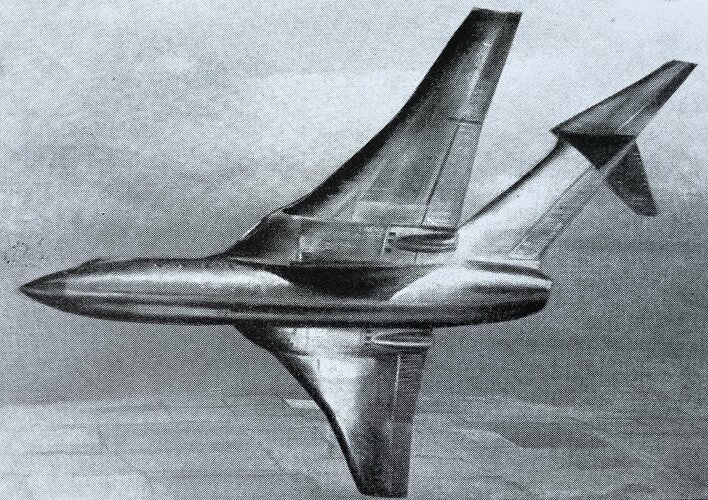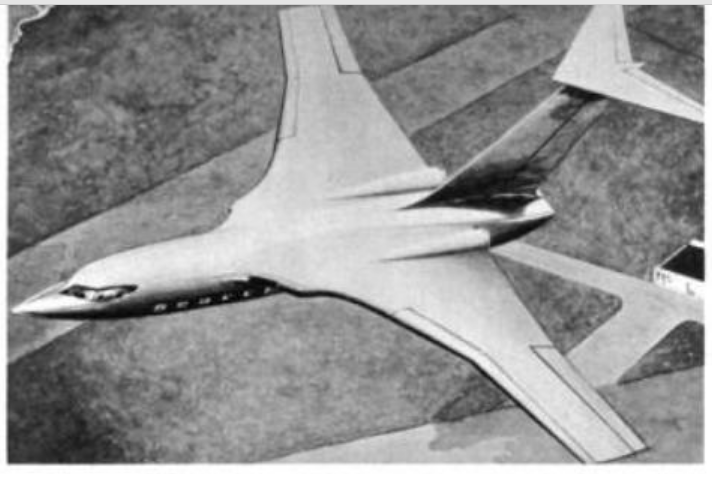FAIRCHILD'S AIRLINER
Two Buried Turbojets Specified in a "Cusp-wing" Project
THE drawings on this page illustrate a jet-transport project by the Fairchild company's aircraft division. This novel design was revealed to representatives of 12 American domestic airlines on November 17th by the division's chief engineer, Mr. Walter Tydon.
Although it is at present no more than a project it is worth some comment, for it is the first modern American transport design to be freely published by the company responsible.Fairchild's president, Mr. Richard S. Boutelle, stated last June that a $1.5m research programme was under way; the first two results are this design—known as the M-186—and a turboprop military aircraft which is still secret, but is believed to be a deltawing assault-transport. It may also be remembered that Fairchild unsuccessfully approached Avros in September with a view to acquiring that company's research data on delta-wing aircraft. The Fairchild M-186 is a most provocative design. It differs radically from all other modern transports in several respects: it has a high wing, aft loading door and on!y two engines—and the engines are buried in the wing. The last feature is certainly worth noting, in view of what has been said and written in America to indicate that the buried engine is neither safe nor efficient. The power unit specified is the Wright J67 two-spool turbojet developed directly from die Bristol Olympus. It is, in fact, being developed in much the same manner as is the Bristol engine, and the thrust available is predicted as 12,000 lb minimum; but it is certain that no civil J67 will materialize for three years at least. Advantages of the J67 are its good fuel economy and light weight, which should more than make up for its high initial cost. The fuel will be wide-cut gasoline. There is to be provision for "Comet 3-type" external leading-edge tankage for later transcontinental versions of the aircraft.
The M-186 wing has a span of 100ft and a plan-form for which Fairchild use—not altogether accurately—the geometrical term "cusp." The character of this wing can clearly be seen in the drawing; it is a straight mixture of swept and delta forms in an exactly similar manner to that used in the A.ST. high-speed target glider. The delta inner portion houses power units, fuel and main landing gear, while the thin outer sections are noteworthy for their leading-edge flaps. It is probable that, were no trailing-edge flaps fitted, the M-186 would be tailless. As it is, the inner wing has large split flaps and the tail is, as a consequence, reminiscent of mat of the Javelin. For that matter, the wing layout parallels that of the Victor.
The drawing shows plainly the interior arrangement which, at a seat pitch of 40in and a gangway width of 17in, provides 44 seats—the same as the Comet Series 2. Up to 64 seats are foreseen in "coach" versions. In the rear are the galley and coat/baggage spaces, to starboard and port respectively, followed by two toilets further aft. Immediately in front of the passenger accommodation is a further baggage hold and a stewardess space, while the flight deck is laid out for two pilots, navigator and radio officer. All accommodation is well forward of the jet nozzles.
Points of note are the "bubbles" on the canopy (a la Accountant) and the interior dimensions across the spar bulkheads—76in wide by 72in high; full width is 110 in. The floor is 48in above ground. Altogether the M-186 is well worth serious consideration. The aircraft would sell for $1.7m, assuming a production-run of 100. The data below is that published by Fairchild, except for the wing area and loading, which are our own estimates. The performance claimed is high; in practice we feel that the weight would be likely to rise well above the quoted figure.


